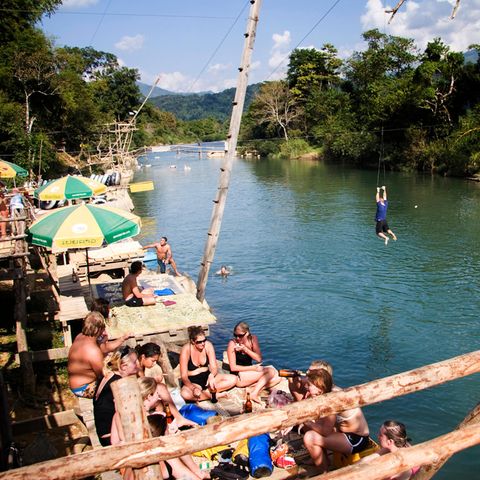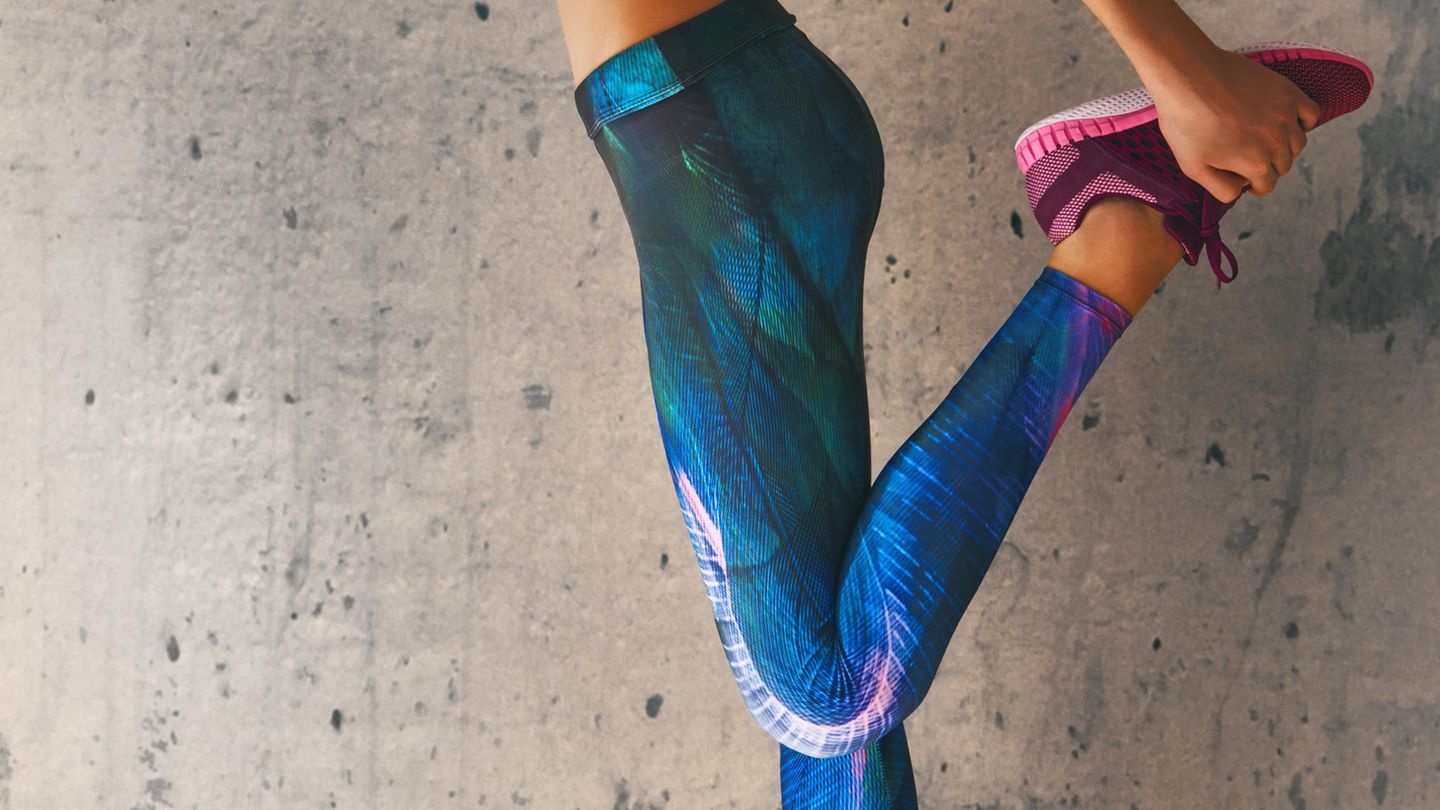Health risk
The most dangerous drinks in the world – from disgusting to deadly
Copy the current link
In Laos, six tourists died from adulterated drinks. Their deadly poison: methanol. The case is extreme, but not atypical. These drinks are dangerous.
The deadly shots were on the house – adulterated alcohol, apparently served to young backpackers in a hostel in Laos, Southeast Asia, in mid-November. Six people have died since then: backpackers from Denmark, Great Britain and Australia. The drinks contained methanol, also known as wood spirit in German.
Methanol is a close chemical relative of ethanol, the drinking alcohol – and therefore cannot be recognized by its taste in mixtures. The very cheap methanol is used as antifreeze for cleaning purposes and as a fuel additive. The tricky thing is that our liver converts it into formaldehyde and formic acid. Both have a destructive effect on many organs – and slowly too. Abdominal pain, dizziness and nausea often only appear after a day or even later. Then the eyes and optic nerve, the liver, the kidneys and the heart are damaged: those who are poisoned go blind, many recover only slowly or even die, like the young travelers now.
The organization “Doctors Without Borders” registers thousands of methanol-related deaths every year around the world, most of them in poorer countries and where branded alcohol is strictly regulated or very heavily taxed: many people there burn themselves. And cynical profiteers turn ordinary drinks into dangerous ones Fusel. In 2021, there were 29 methanol deaths in Orenburg, Russia. The year before, 67 people died in one fell swoop in India. Drinks containing methanol are therefore very high on the global ranking of the most dangerous drinks.
Horror mix of yesteryear: absinthe with ether
For a long time, the cult drink absinthe, an absolute hit among celebrities of previous generations, was considered similarly threatening: the painters Paul Gauguin and Vincent van Gogh consumed it, as did the writers Oskar Wilde and Ernest Hemingway. Quite a few absinthe drinkers apparently went crazy – but that was more because absinthe was often burned, mixed boldly or even mixed with the anesthetic ether.
Absinthe was then banned in many countries for a long time – in Switzerland, where it was first invented, even through a constitutional referendum that was valid from 1910 until the beginning of this century. Today, however, absinthe is freely available again and is simply a strong herbal schnapps, with all the risks of alcohol, which, as we all know, are not exactly small. And the extremely stomach-damaging ether, which acts roughly like turbo alcohol, disinhibiting and making you euphoric, is now only very rarely abused as a drug – it is also hardly ever used as an anesthetic.
Unfortunately, the addition of poisons to “normal” alcohol has by no means disappeared. Nowadays, modern narcotic drugs that are attributed to alcohol are high on the danger list for police and health authorities. This is often done with criminal intent – and the mixtures are therefore popularly known as knockout drops. “Liquid Ecstasy” (gamma hydroxybutyrate), the best known of these substances, is, like methanol, hard to taste, but quickly renders potential crime victims defenseless. The police around the world therefore repeat like a litany: Anyone who wants to drink in public places should always be vigilant and, if possible, not alone. And when you’re out and about, only consume in honest shops and reputable bars and never trust strangers lightly.
These are twelve of the most dangerous foods in the world
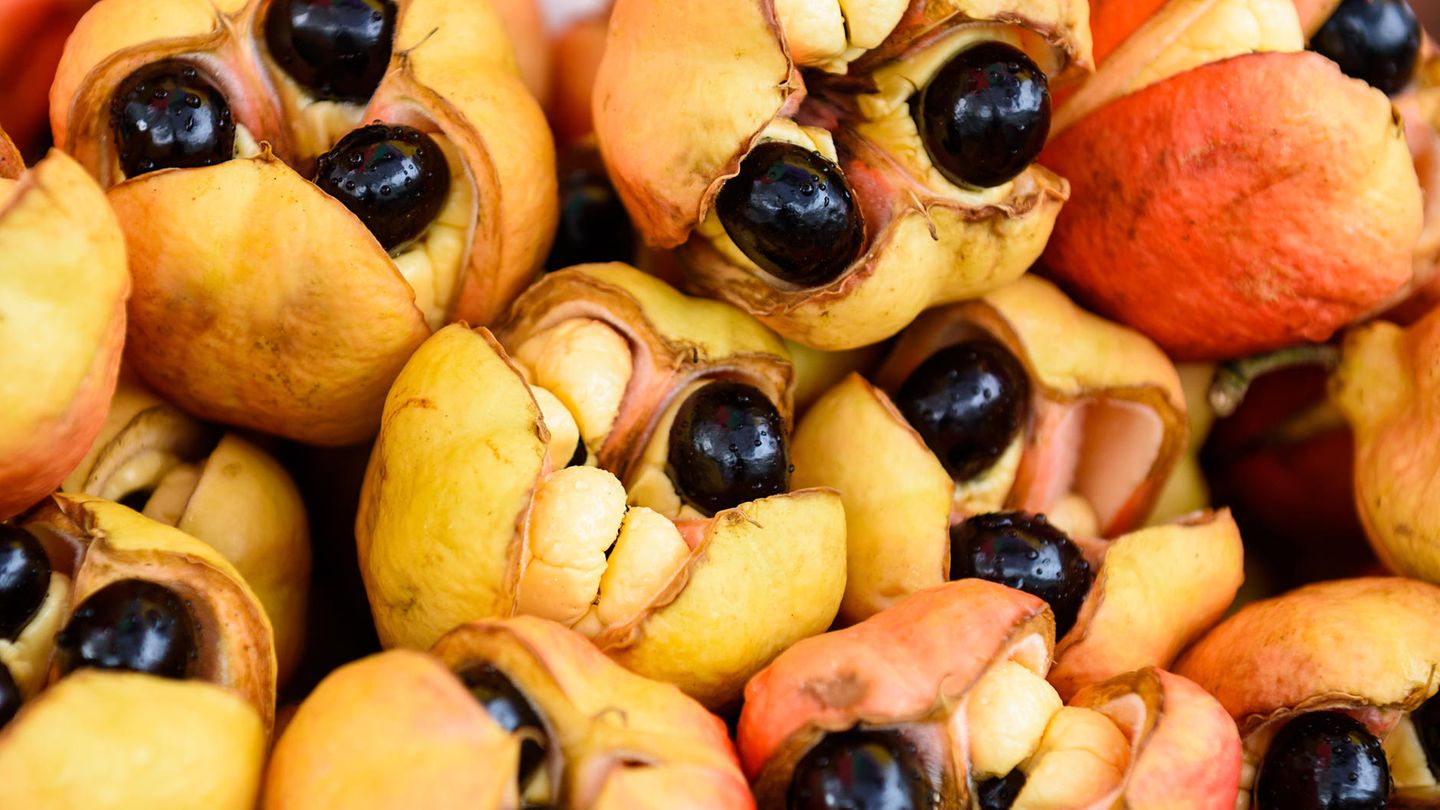
Ackee: Ackee probably originally comes from West Africa and is now the national fruit in Jamaica, although it is highly poisonous. The amino acid hypoglycin it contains can cause serious health problems, from vomiting to hypoglycaemia. In the worst case, there is a risk to life. It must therefore not be eaten whole; only the fleshy seed coat is edible. If unripe or overripe it is also poisonous. The ackee fruit should only be eaten once it has opened itself
© sevenstockstudio / Getty Images
Back
Further
This is what the police advise with regard to dubious drinks
For everyone who travels around the world and doesn’t want to go without drinks, Interpol has created a checklist with which you can at least identify all kinds of booze whose price seems too good to expect clean distillates. The most important advice from the World Police Organization:
- “Only buy your alcohol from reputable and licensed retailers, bars and supermarkets. Do not buy alcohol from peddlers, unlicensed market traders or from customers in bars.”
- “If the product is sold well below its normal price or does not appear to include normal liquor taxes, it is likely counterfeit.”
- “Look out for poor quality packaging, misspellings and unusually shaped bottles. Look for the manufacturer’s contact information and address. If these are missing, it is a counterfeit. Check the seal on the bottle. If the seal is broken or damaged , the contents may have been tampered with and are no longer drinkable. Watch out for counterfeit barcodes. If you have an app on your phone that can scan barcodes, scan it and check it is listed as the correct product.”
- “Beware of bad smells! If it smells like paint stripper or nail polish remover, then it probably is something like that!”
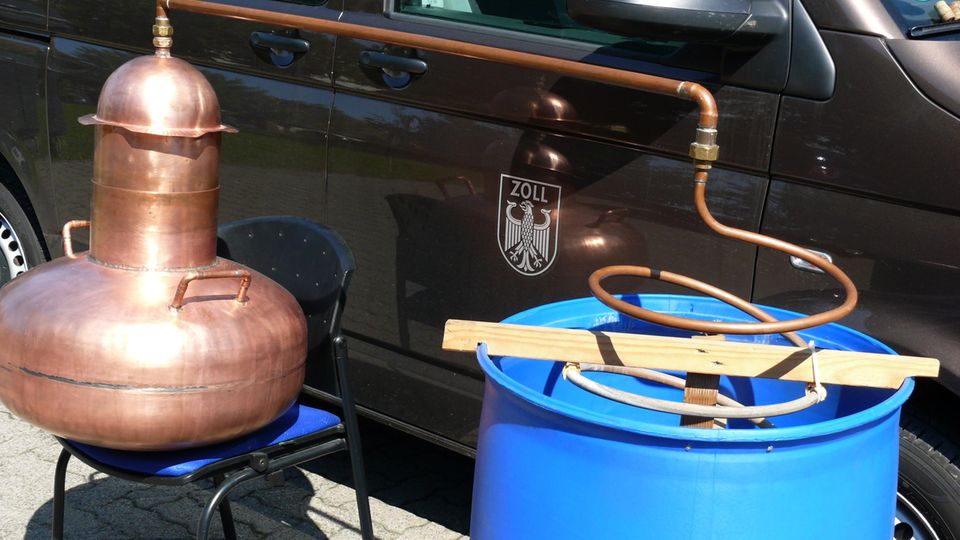
But let’s be completely honest: Danger lurks even where nothing has been adulterated or mixed: Ethanol itself, our usual everyday alcohol, is also officially a poison – the World Health Organization leaves no doubt about this: “Alcohol is a toxic, psychoactive and addictive substance and was classified decades ago by the International Cancer Research Center as a Group 1 carcinogen – this is the highest risk group, which also includes asbestos, radiation and tobacco. Alcohol consumption is responsible for at least seven types of cancer responsible, including the most common forms such as breast cancer in women and colon cancer.”
Mate tea: Too hot is unhealthy
Surprisingly, natural products that are actually completely unsuspicious also rank high up on the top ranks of the international danger statistics: mate tea, for example, which is particularly popular in South America. Scientists initially found that heavy consumption was associated with an increase in esophageal cancer. But today we know: The reason lies not in the mate. The custom is to drink the stimulating beverage extremely hot, often through a metal straw. And so today one thing is certain: the heat itself is the problem. Again and again it irritates the sensitive mucous membrane of the esophagus. Such tissue stress can promote the formation of cancer cells. And this even applies regardless of the type of drink. Anyone who sips their coffee or tea too hot is also at risk, which increases dramatically when co-consumption with alcohol and cigarettes. If you want to be on the safe side, you must generally avoid drinks temperatures above 65 degrees. This is guaranteed with mate from the bottle. But it also contains plenty of caffeine.

The caffeine dose throughout the day should be evenly distributed and moderate – no matter what drink you love. The safe amount for healthy adults is 400 milligrams of caffeine – for example, four to five cups of coffee, equivalent to 0.9 liters. For young people between the ages of 12 and 18, however, the recommendation is only a quarter, i.e. 100 milligrams per day. The recommended dose also applies to energy drinks, which, despite popular assumptions, actually have a lower caffeine content than most types of coffee. With the energy market leader it is 30 milligrams per 100 ml, while with a good espresso it is at least 100 – which means that even a tiny cup is almost the same as a whole can of Bullen-Brause.
In fact, the risks of high doses of caffeine are nowhere near those of alcohol; Nevertheless, the recommendations for moderation make sense, because quite a few people react to excess with disturbances in their heart rhythm, reduced sleep quality and an excess of stomach acid, which can lead to heartburn, among other things. Otherwise: The second “drug” in energy drinks is pure sugar – the rush of glucose in the blood after a can also suggests an increase in performance, because sugar is actually an energy source – and that’s the honest part of the name “Energy drink”.
Ice cubes as germ blasters
However, there are enormous factors contributing to the world ranking of the most dangerous drinks that are usually not even considered. Like ice cubes. Various viruses and bacteria are masters at resisting even deep frost. They thaw in the glass and then cause chaos in the intestines – and that is by no means a third world problem. A comprehensive study in the USA found between 67 and 83 percent contaminated cubes in samples collected from the catering industry. There was a mega outbreak of norovirus after a football game: 5,000 people reported sick afterwards, the number of unreported cases is unknown, but the dice’s guilt has been proven.
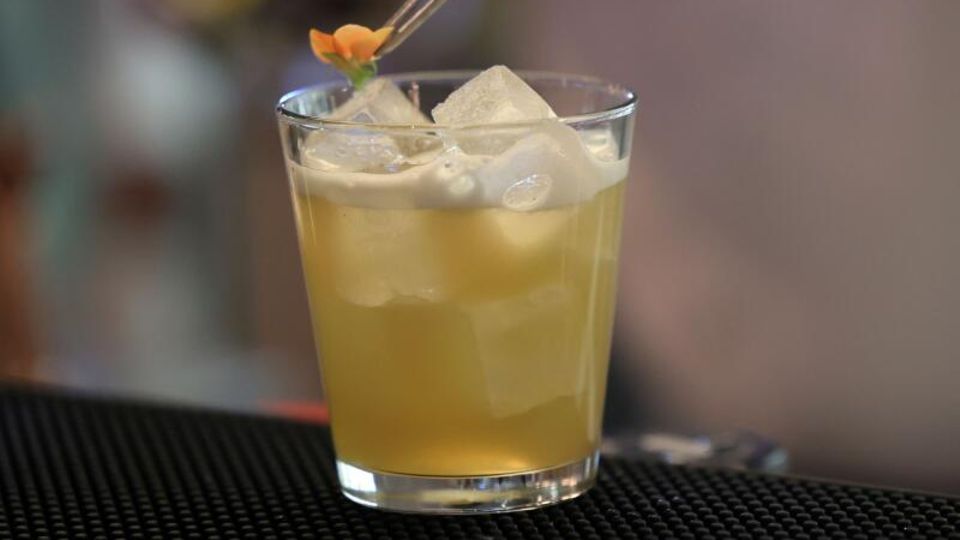
Another source of danger: citrus fruits. And it’s not just sweet orange slices – even the most sour slice of lemon or lime on the rim of a cocktail glass can turn out to be a hidden object of microbes under the microscope and can throw even people who don’t have a hangover on the mat for two days.
If that’s not enough for you, you can try something quite hip but completely stupid: a homemade protein shake made from raw eggs and unpasteurized milk. This may sound “healthy” to some ears, but it is the exact opposite – the chances of infection from various germs are downright paradisiacal. From a pathogen perspective.
Finally, alcohol again: It is now widely understood that it can be fatal to people. Many people don’t know that the principle “alcohol disinfects” does not apply to all pathogens. But hygienists have long been able to detect many types of harmful bacteria in even the hardest tequila and whiskey cocktails. At least they were obviously doing well.
Source: Stern
I’m Caroline, a journalist and author for 24 Hours Worlds. I specialize in health-related news and stories, bringing real-world impact to readers across the globe. With my experience in journalism and writing in both print and online formats, I strive to provide reliable information that resonates with audiences from all walks of life.


